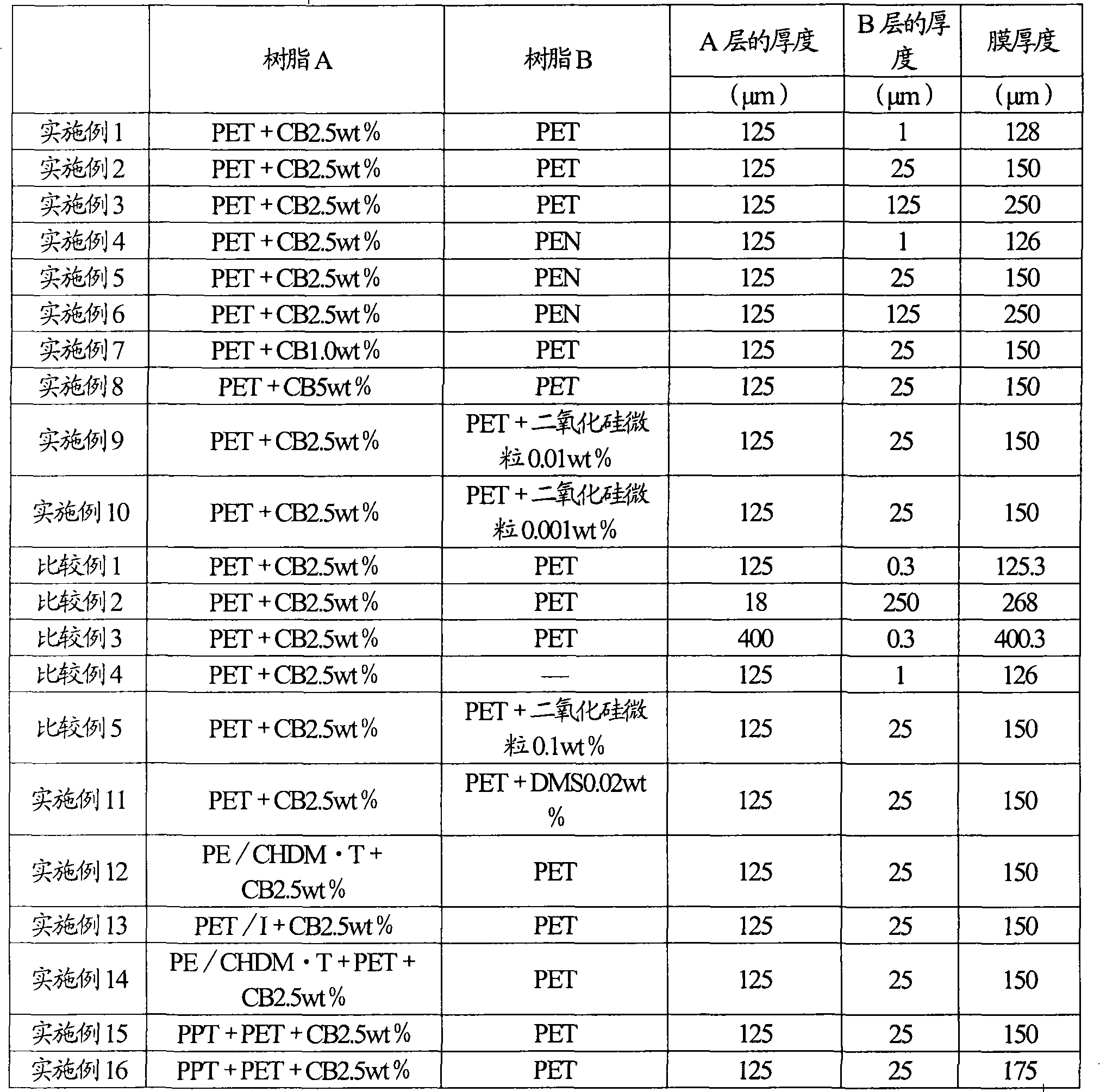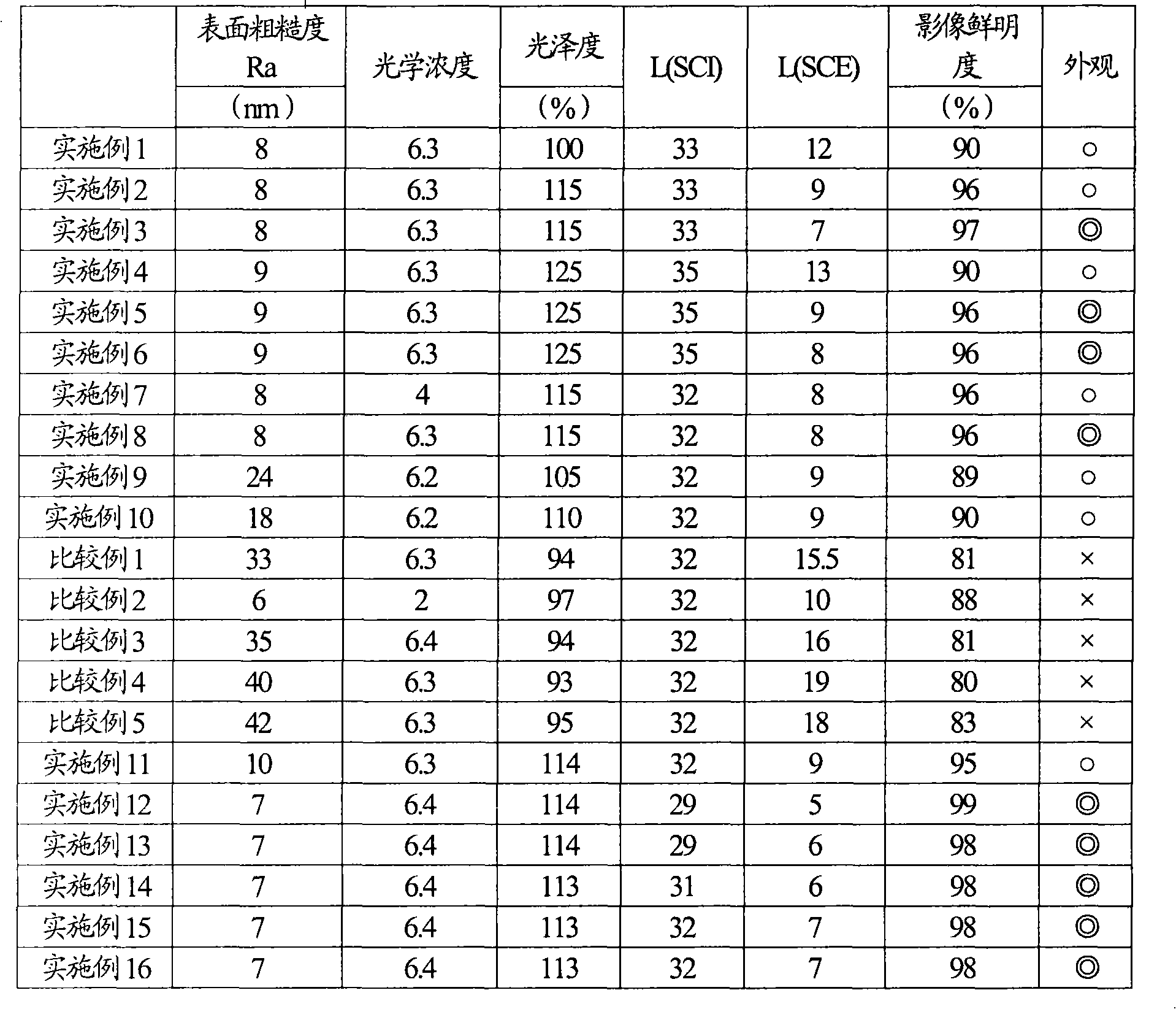Laminated film and molded object
A technology of laminated film and resin layer, applied in the direction of layered products, synthetic resin layered products, household components, etc., can solve the problems of pitch black and insufficient image clarity, achieve high clarity, prevent damage and adhesion effect of things
- Summary
- Abstract
- Description
- Claims
- Application Information
AI Technical Summary
Problems solved by technology
Method used
Image
Examples
Embodiment 1~3
[0067] Resin A and resin B were prepared as two kinds of resins. As the resin A, a polyethylene terephthalate (PET) obtained by finely dispersing 2.5 wt % of Mitsubishi Chemical Carbon Black HCF#2600 and having an intrinsic viscosity of 0.63 was used. In addition, as the resin B, polyethylene terephthalate having an intrinsic viscosity of 0.65 was used. Resin A and resin B were vacuum-dried at a temperature of 180° C. for 3 hours, respectively, and then supplied to each single-screw extruder. In addition, the melting point of PET is 256 degreeC.
[0068] Each was made into a molten state at 280° C. in an extruder, and after passing through a gear pump and a filter, they were merged using a feed head of two layers. It should be noted that, regarding the lamination ratio, the flow rate of each resin in each example was adjusted so that the layer thicknesses shown in Table 1 were obtained. The thus-obtained molten laminate composed of two layers was formed into a sheet using a d...
Embodiment 4~6
[0072] Resin A and resin B were prepared as two kinds of resins. As the resin A, a polyethylene terephthalate (PET) obtained by finely dispersing 2.5 wt % of Mitsubishi Chemical Carbon Black HCF#2600 and having an intrinsic viscosity of 0.63 was used. In addition, as the resin B, polyethylene naphthalate having an intrinsic viscosity of 0.68 was used. Resin A and resin B were each vacuum-dried at a temperature of 180° C. for 3 hours, and then supplied to each single-screw extruder. In addition, the melting point of PEN is 263 degreeC.
[0073] Each was made into a molten state at 280° C. in an extruder, and after passing through a gear pump and a filter, they were merged by a feed head of two layers. In addition, the flow rate of each resin in each implementation was adjusted so that it may become the layer thickness shown in Table 1 about lamination ratio. The molten laminate composed of two layers obtained above was molded into a sheet, and then quenched and solidified by...
Embodiment 7~8
[0077] A film was formed in the same manner as in Example 1 except that the content of carbon black in resin A was changed as shown in Table 1. The obtained results are shown in Table 1.
PUM
| Property | Measurement | Unit |
|---|---|---|
| Layer thickness | aaaaa | aaaaa |
| Thickness | aaaaa | aaaaa |
| Surface roughness | aaaaa | aaaaa |
Abstract
Description
Claims
Application Information
 Login to View More
Login to View More - R&D
- Intellectual Property
- Life Sciences
- Materials
- Tech Scout
- Unparalleled Data Quality
- Higher Quality Content
- 60% Fewer Hallucinations
Browse by: Latest US Patents, China's latest patents, Technical Efficacy Thesaurus, Application Domain, Technology Topic, Popular Technical Reports.
© 2025 PatSnap. All rights reserved.Legal|Privacy policy|Modern Slavery Act Transparency Statement|Sitemap|About US| Contact US: help@patsnap.com


